Simple Tips For How Much To Feed Your Dog Or Cat
Half the battle of keeping our pet’s weight under control is knowing how much to feed them.
It is so easy for us to overfeed our pets regardless of the type of diet we are providing them.
Whether we are feeding a home-cooked diet, a kibble diet, or a raw meat diet, it’s crucial that we don’t overfeed as obesity in pets causes many chronic disease problems.
Following on from our post on how to assess your pet’s weight, in this post we’re going to discuss how to work out how much to feed your dog or cat.
Let’s get right to it.
Why Is Overfeeding A Problem For Our Pets?
By learning how much to feed your dog or cat, you can help prevent many problems such as:
- musculoskeletal problems like arthritis, cruciate disease, IVDD, patella luxation
- breathing issues such as brachycephalic obstructive airway syndrome and tracheal collapse
- heat intolerance,
- diabetes
- liver disease
- increased arterial blood pressure
- urethral sphincter incontinence (can’t control their bladder and dribble urine)
- some cancers such as transitional cell carcinoma of the bladder
Video: How Much Kibble Should You Feed Your Pet?
If you prefer to read it, below I have the written version.
How To Read A Pet Food Label
Working out how much to feed your dog or cat can be very confusing.
It seems like everyone has a different opinion and every bag of food has different instructions.
Remember Calorie is King.
A calorie is a unit of measurement that describes how much energy a food contains.
To maintain a certain weight, the calories your pet ingests need to equal energy expenditure (how much exercise they do).
If your pet eats more calories than the amount of exercise they do, then they will put on weight very quickly.
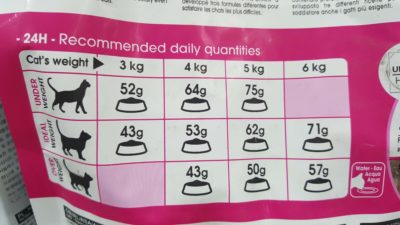
Cat food label showing weight of kibble.
On the back of a label you will often see:
- the weight range for the pet
- how many cups of food are required for that weight range
- how many grams of food is required for that weight range
Calculate How Much Food Your Pet Needs
Step 1: Work Out Weight Of Kibble In Measuring Cup
To work out how much to feed our pet we need to work out how much the kibble weighs in the vessel (Cup) of our choice.
Choose a container (Cup) that you will always use to measure your pet’s food.
Determine how much a full cup of kibble weighs:
- Put your empty cup/container of choice on the scales
- Zero the scales
- Add kibble and fill to the very top
- Note the weight of the full cup of kibble – This is the weight of the kibble ONLY (doesn’t include the cup weight)
In the video, you can see that the cup we use holds 102 grams of this type of biscuit.
If we go back to the label, you can then double-check how many grams 1 Cup is supposed to weigh.
In our video example, 1 Cup weighs 100grams, and our cup holds 102 grams so we know that this is a good measuring cup to use for this kibble.
You might find that your measuring cup only holds half the weight of the biscuits that the label states.
Perhaps it holds double the amount?
This is why it is so important that we check the weight of the kibble in the cup we choose to use.
If you change your brand of kibble you will to repeat this process to check the weight of the new kibble in your measuring cup. Not all kibble weighs the same.
If our cup of kibble weighs double the amount that the bag’s cup weighs, then we know we need to decrease the volume of biscuits that we feed by half of what the label tells us.
Or change our container size to one-half the size.
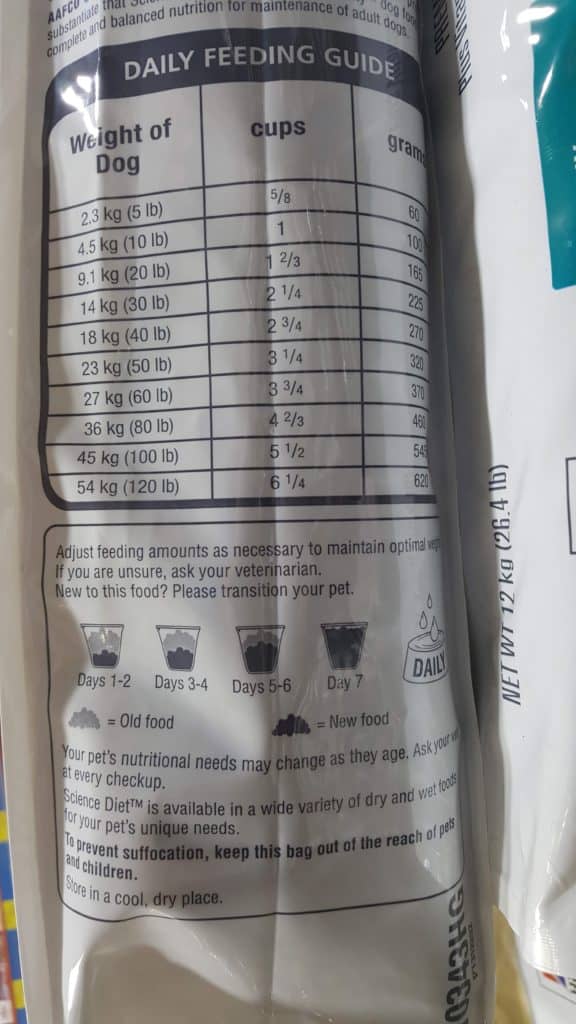
Dog food label showing how many cups and weight of food required.
Step 2: How Many Calories Does My Pet Need?
When working out how much to feed our dog or cat we can either rely on bag recommendations or use a calculation.
For the most part, bag recommendations are a good starting point, albeit they are usually a little on the high side and your pet may put on weight if you aren’t paying attention.
If you do wish to do the calculations – read on:
For this calculation, you need to know the weight of your pet.
We recommend that you pop down to your local vet clinic, they will let you weigh your pet (call first).
Some pet stores also have a set of scales you can use.
For this example, we are going to pretend we have a dog that weighs 15kg.
We need to work out how many calories our 15kg pet requires for resting energy requirements (RER).
We use the following calculation to work this out:
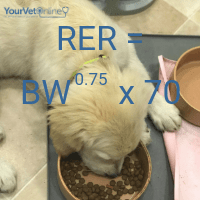
The calculation to work out resting energy requirements (RER) for dogs and cats.
Resting energy requirements = Bodyweight to the power of 0.75 multiplied by 70 RER = BW0.75 x 70
For our pet that’s 15kg the equation looks like this: RER = 150.75 x 70 RER = 532 calories/day
Now we need to remember we are only talking about resting energy requirements.
These are the requirements that our pet’s body needs to function, no more no less.
This value needs to be multiplied by 1.2 for cats, or 1.6 for dogs to account for any activity that they do.
We aren’t expecting our dog or cat to be working hard running around, being pregnant, or lactating.
The RER is the amount needed to survive.
Step 3: How Many Calories Does The Pet Food Contain?
Once you’ve worked out how many calories your dog or cat requires you then need to actually go back to your bag of pet food and check how many calories each cup of biscuits contains.
In our example in the video, we can see that one cup of these particular biscuits contains 363 calories.
We also know that our pet, in our case our 15kg dog requires 532 calories for resting energy requirements.
That means he needs about 1.4 times one of these containers just to have the amount of energy to support all his bodily functions ie. his RER.
Let’s not forget that our pet actually needs more food than just the RER amount, to account for any exercise they do during the day.
When working out a volume to feed a pet the food company will often utilise averages:
- the average amount of exercise a pet will have per day ie. dogs it may be 30min-1 hour a day, cats – mmmmm not much!
- average metabolic rate
In reality, the only times your pet needs to be fed more is when:
- they are in the last trimester of pregnancy
- they are lactating
- they are a working dog doing high-volume exercise for long durations
We know that 20-30% of animals will have a metabolic rate that swings on either side of the average.
Essentially, that means for one out of every four pets they will be eating TOO much food and will be getting FAT.
Or they will be struggling to get enough food to meet energy requirements and they will become skinny.
In our video example, we can see that a dog that is 14kgs needs 2.25 Cups of food which is 225grams.
Remember, this is a starting point. Assess your pet after two or three weeks on this diet and note whether their body condition score has increased or decreased and adjust how much you feed.
Pet Feeding Tips To Remember
- WEIGH YOUR CUP and cross-reference with the weight of a cup on the bag of food.
- It is super important that you know the weight of one cup of kibble so you can feed the appropriate amount as per the bag.
- If your pet doesn’t require a full cup – cut the cup down to size or choose a smaller cup size.
- i.e. if they only need 1/2 a cup – cut the cup in half. This way, no one is tempted to feed more!
- Every brand and every type of food (within the brand range) has a different energy density (amount of calories). One cup of one type of food is likely to contain a different number of calories than another type of food. When you change brands or types of food, you need to recheck how many grams and calories a cup holds and adjust your feeding accordingly.
Feeding your cat or dog the correct amount of food isn’t difficult.
Knowing the weight of a cup of food will help immensely.
If your pet is overweight or struggling with keeping weight on, we will be covering these topics soon.
Tell us how you keep your pet from eating too much in the comments below.
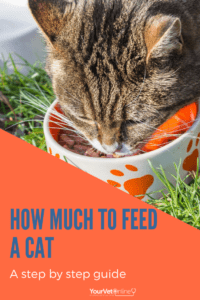
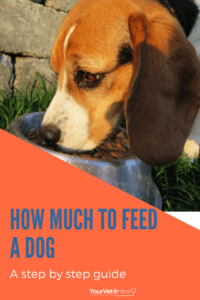

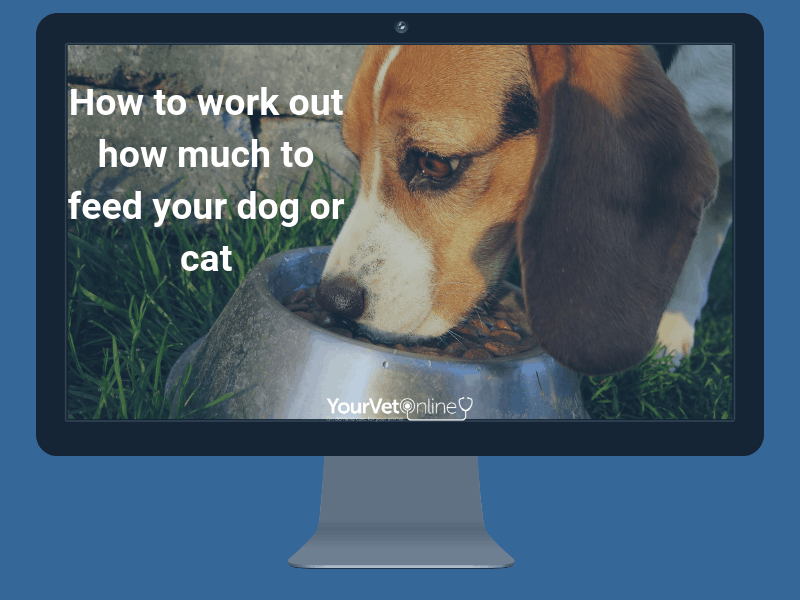
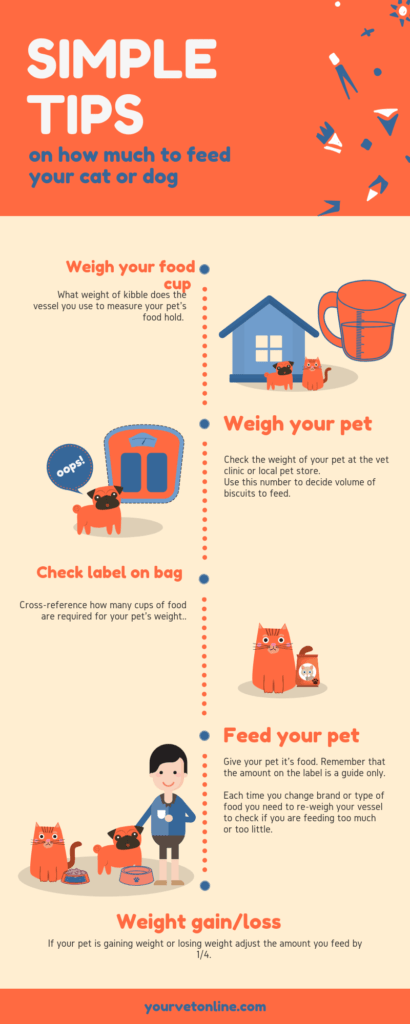
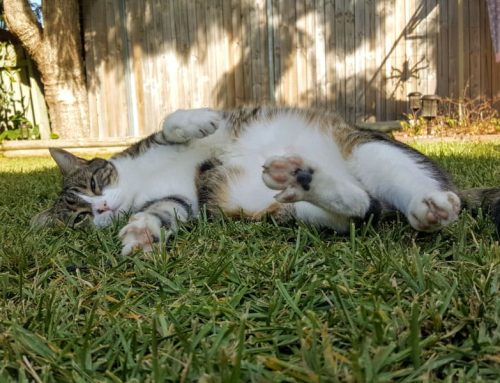
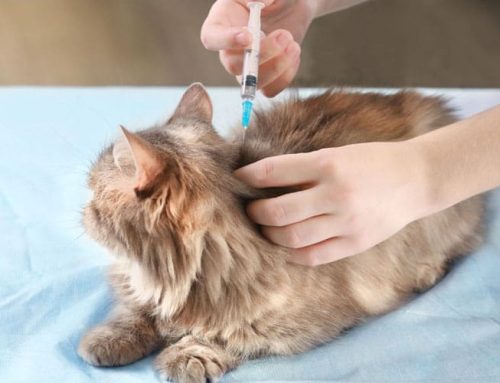
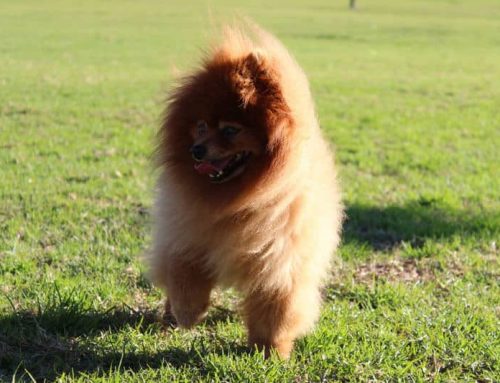
Leave A Comment